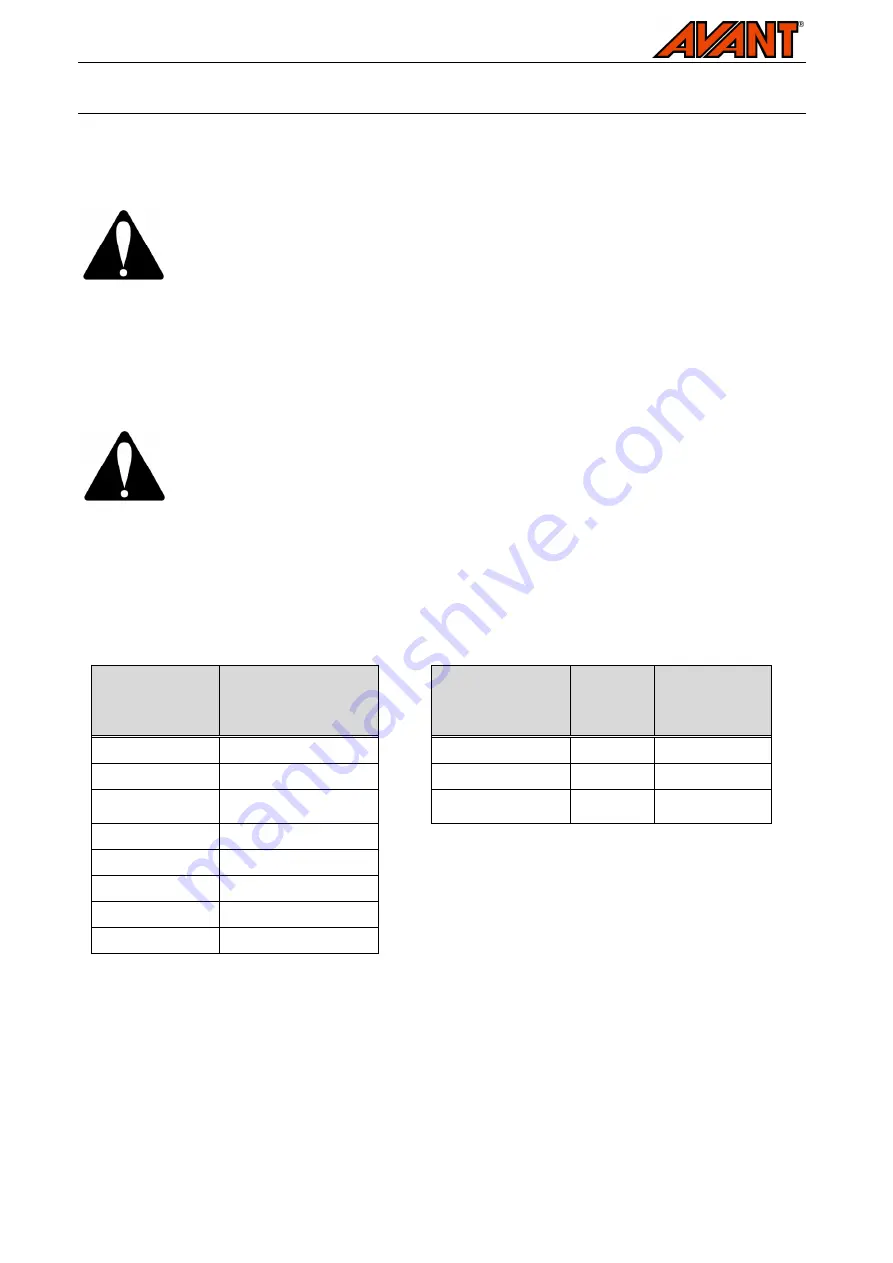
10(12)
6.
Using the trailer
Check the trailer and the operating area once more before starting to work. Check that there are no large
rocks or other obstacles that might overturn the trailer. Quick inspection of the equipment and the operating
area before use are parts of ensuring safety and the best performance of the equipment.
•
Check that the trailer is hitched properly. Check also that the fitting of the hitching on the
loader is in order.
•
Check that air pressure of the trailer wheels is suitable.
•
Check the drawbar and the locking mechanism of the trailer regularly. Read the
instructions about maintenance and service on chapter 7.
•
Avoid overloading the trailer. Use the table 3, shown below, to estimate the weight of the
load. Adapt the load according to loader model and operating conditions.
•
Operate the trailer tipping only from the driver’s seat.
•
Make sure that the loader and the trailer are used in a safe manner and as intended.
•
Do not use the trailer to transport persons or as a working platform.
The possibility of tipping over of the trailer and the movements of the trailer cause a
risk for serious personal injuries or death. Make sure that there are no other persons at
the operating area of the trailer. Do not allow others to stay near the sides or behind
the trailer at less than 3 metres safety distance, or to the crushing hazard area in
between the trailer and the loader.
Table 3 – Typical material densities for estimating load carrying capacity and trailer volumes tilavuudet
The information in the table can be used to estimate the weight of the load. The figures in the table are
as guidelines. Actual material densities may vary greatly according to factors such as moisture content
and compactness of the material.
Material
Density of material,
(indicative),
kg / l (t / m³)
Trailer
load space volume:
Product number
A2949
A21200
Snow
0,1 - 0,8
Single sides
0,48 m³
0,76 m³
Wood chips
0,15 - 0,3
Double sides
0,98 m³
1,55 m³
Wood pellet
n. 0,65
Load carrying
capacity
1200 kg
1800 kg
Peat
0,4 - 0,7
Soil
1,5 - 1,8
Sand
1,5 - 2
Gravel
1,7 - 1,9
Crushed rock
1,65 - 2,6
The table helps to avoid loading of too heavy loads. The weight of the load in metric tonnes can be
calculated by multiplicating the volume of the material with its density.
Example: Trailer A2949 is filled with soil up to its sides (single sides). The weight of the load is, according to
the actual density of the material, in between 0,48 * 1,5 = 0,72 (720 kg) and 0,48 * 1,8 = 0,864 (870 kg). The
load carrying capacity must be estimated by taking in account the compactness of the material and the
evenness of the load.
Summary of Contents for A21200
Page 16: ......


































